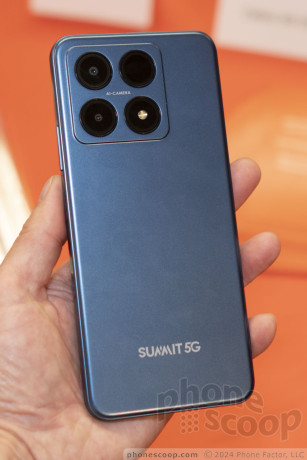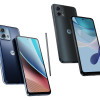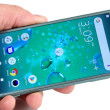Hands On with the Boost Summit 5G
Nov 15, 2024, 12:18 PM by Rich Brome @rbrome.bsky.social
updated Nov 19, 2024, 12:47 PM

The Boost Summit 5G is a very straightforward phone: it aims to be the most affordable 5G phone in the US, one that Boost can give away for free to new customers. In terms of features and specs, it has everything you'd expect this type of phone to have, and nothing you wouldn't. And yet there are a couple of things about this phone that might surprise you. Read on for our hands-on first impressions and rundown of what you need to know about the Summit 5G.
The first thing you should know about the Boost Summit 5G is that it's really just a Boost Celero5G SC with a lesser camera. They are literally the same phone inside, just with different cameras; that's the only difference. The Celero5G SC sells for just few bucks more, so if you care about camera quality, consider the Celero5G SC instead. The Summit 5G is strictly for people focused on price alone.
Hardware
Speaking of the camera... At first glance, you might think there are four cameras on the back, right? Nope. There are only two... and the second one doesn't really count. There's the main camera (at 13 megapixel), a depth camera (to enhance portrait shots), and that's it. The LED flash takes up another circle in the "camera group", while the fourth black circle is purely decorative. I'm not a fan of this intentionally deceptive design.
The other thing you should know about the cameras is that the front camera is only 5 megapixel. That's pretty low, even for a cheap phone. So if you take a lot of selfies, don't expect great quality or detail on those.
While the Summit has most features you'd expect on an affordable Android phone — including a fingerprint reader for security — it does not have NFC. So no tap-to-pay with this one. These days, that's something you do find on some very affordable phones, so it's worth noting.
Of course, this is a very affordable phone, so compromises like these are expected. But it's important to know what all of them are.
The hardware feels nice in person. It doesn't feel particularly premium, but it doesn't feel particularly cheap, either. It felt well-made and felt nice to hold. The buttons work well.
Software
Bloatware city! One way carriers can make their entry-level phones cheaper — especially on white-label phones like this one — is to sell access to pre-load third-party apps. And Boost has definitely done that here. You might not mind that Facebook, Lyft, and DuckDuckGo are pre-loaded, but you'll also have to deal with Chime, Cash App, Block Blast!, Temu, Tubi, NewsBreak, Pinterest, and much more when you first get your phone.
Otherwise, expect a fairly standard, generic Android experience.
The camera app has a slightly odd interface for some options, but it's not an impediment. Portrait mode, Night mode, Pro mode, Panorama, Google Lens, Slow Motion, and Time Lapse are all present. Pro mode even supports RAW output — a pleasant surprise — but it doesn't do long exposures.
In Sum
This seems like almost exactly the phone I would expect at its sub-$100 price. All phones can have a large display and fingerprint reader these days. A memory card slot and headset jack are expected on a phone like this, but anyway they are here.
Where I can give this phone some extra points is the large 5,000 mAh battery. There are still some entry-level phones that skimp on the battery, but this definitely isn't one. Battery life should be very good.
And, of course, 5G. To have a 5G phone in the US for under $100 is a big milestone. It's arguably more important for Boost (than their customers) because Boost doesn't have their own 4G network, just 5G. And you shouldn't expect the same blazing data speeds you'd get on a high-end 5G phone. Nonetheless, 5G is a good thing, and to have it on a truly entry-level phone is great!
Comments
No messages














 Boost Launches Sub-$100 5G Phone
Boost Launches Sub-$100 5G Phone
 iPhone 15 Series Goes All-In on USB-C and Dynamic Island
iPhone 15 Series Goes All-In on USB-C and Dynamic Island
 Samsung S24 Series Adds More AI, Updates the Hardware
Samsung S24 Series Adds More AI, Updates the Hardware
 Samsung Puts its Best Camera Yet in the Galaxy S23 Ultra
Samsung Puts its Best Camera Yet in the Galaxy S23 Ultra
 Motorola Updates its Most Affordable Phones
Motorola Updates its Most Affordable Phones
 Boost Summit 5G
Boost Summit 5G


